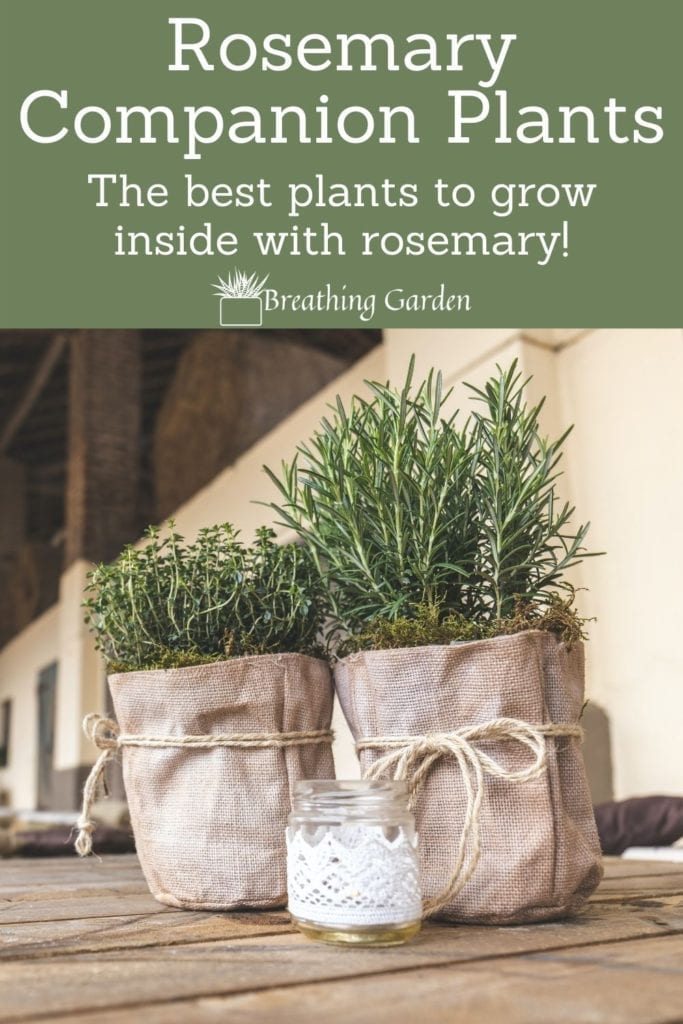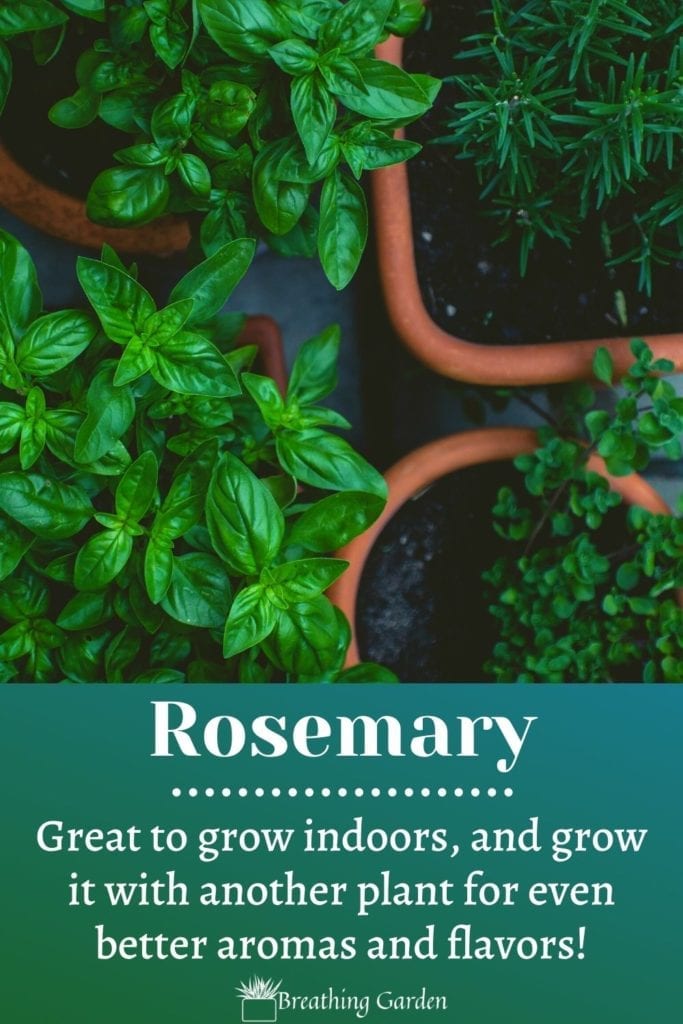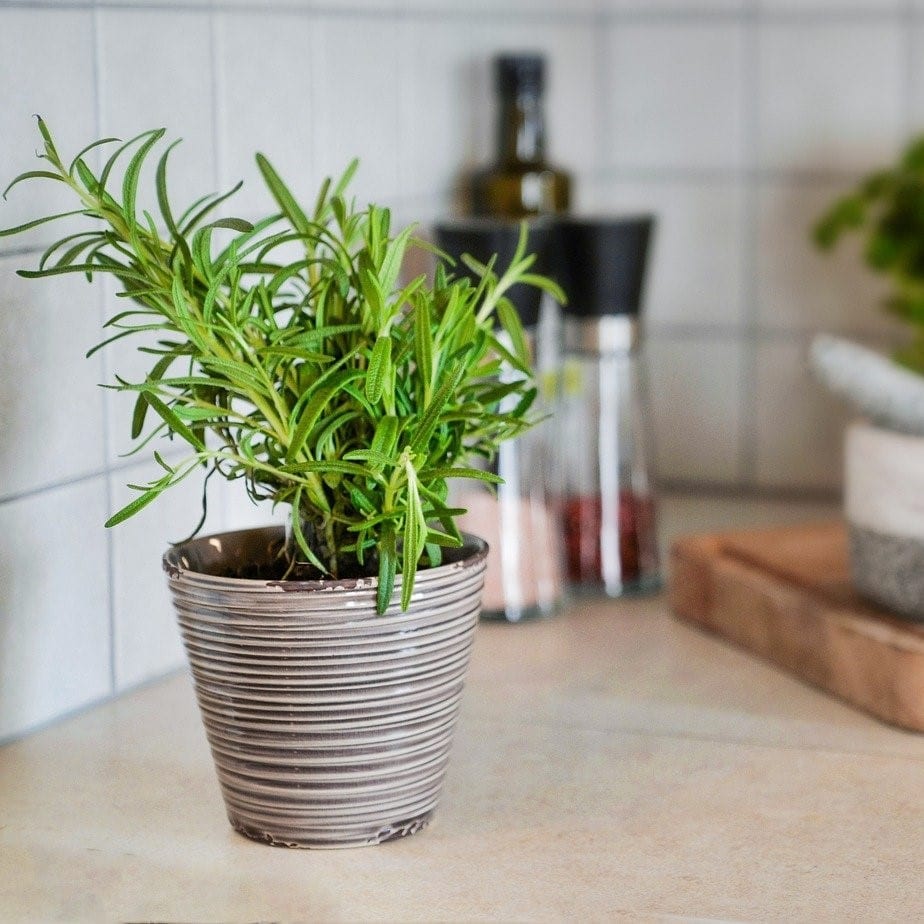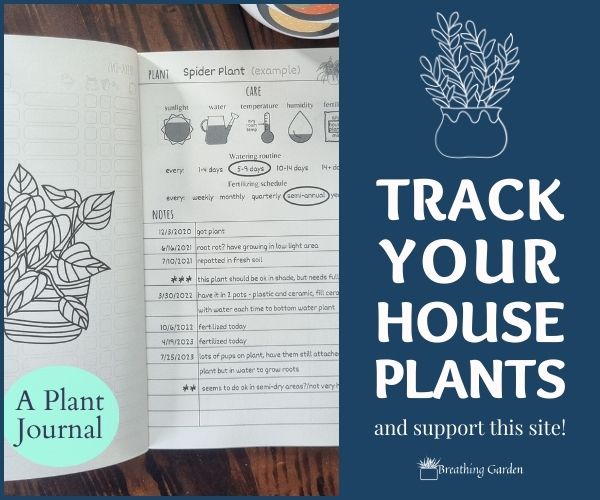Rosemary is an aromatic herb that is regularly used in the kitchen to season different meats, sauces, and vegetables. Growing rosemary indoors is an excellent way to give your space some ever-green color and a natural room fragrance. But it doesn’t have to grow in the pot alone! There are many great rosemary companion plants.
*This post may include affiliate links. When you purchase items from these links, we will receive a small commission, at no extra cost to you, to help support this website. Thank you for your support! Read more ->
With being a low-maintenance and hardy perennial, rosemary is a great place to start for the beginner medicinal or kitchen herb gardener. Companion planting is used as a natural way to defend plants from insects and boost their growth potential or bring beneficial insects closer to the plants.
While broccoli and beans are excellent rosemary companion planting options for a vegetable garden, it’s better to stick with more of an herb variety of plants for indoor planting. The best rosemary companion plants are those that have fragrances that combine well, are visually appealing together, and have similar feeding requirements.
With saying that, let’s look into the 5 best indoor rosemary companion plants!
Lemon Verbena
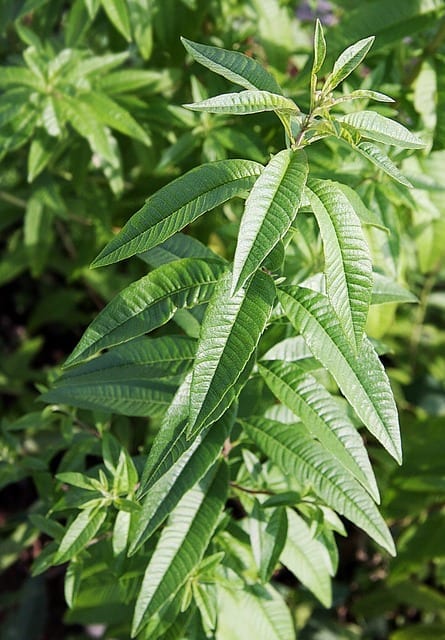
Lemon verbena, or aloysia citrodora, is an aromatic plant with blooms of purple or white flowers in spring and can help repel mosquitoes and flies in the warmer months. Many people dry the leaves in order to make teas or potpourri due to its lemony fragrance.
Lemon verbena grows best in full sunlight and well-draining soil with plenty of rich organic matter. It only needs watering about once a week; any more and the roots could rot in the standing water. Regular pruning is a must as this plant can quickly become leggy and unruly.
Lavender

Lavender, or lavandula, is a commonly grown flowering plant in the mint family that blooms in varying colors of purple. Its rich scent is often used as a relaxation aid in aromatherapy, and the flowers and leaves can be dried and used to make teas.
Lavender requires full sunlight for the best growth, and well-draining soil with small rocks or gravel mixed into it. You should find out the pH level of the soil you plan to plant the lavender in beforehand, as lavender is sensitive to acidic soil and can be killed gradually if planted in such a soil.
Once the plant is rooted in its container, it is relatively low-maintenance, only needing the occasional watering and pruning.
Keep reading: lavender vs rosemary
Sage

Sage, or Salvia officinalis, is a culinary and ornamental herb best known for its cleansing ability once dried and burnt. Rosemary can also easily be added to this cleansing bundle to add a new aroma, making this perfect to grow together.
Sage’s earthy flavor is a favorite to add to soups, stews, and meats. Sage grows purple blooms during midsummer, and its leaves put off a strong fragrance that melds well with that of rosemary.
This is also one of the few plants that grows and tastes better when growing it as a rosemary companion plant. Sage enjoys growing in areas with access to full sun and in well-draining soils. It prefers the soil on the dryer side and doesn’t require much in the way of watering, only when dry to about 1 inch down.
Thyme
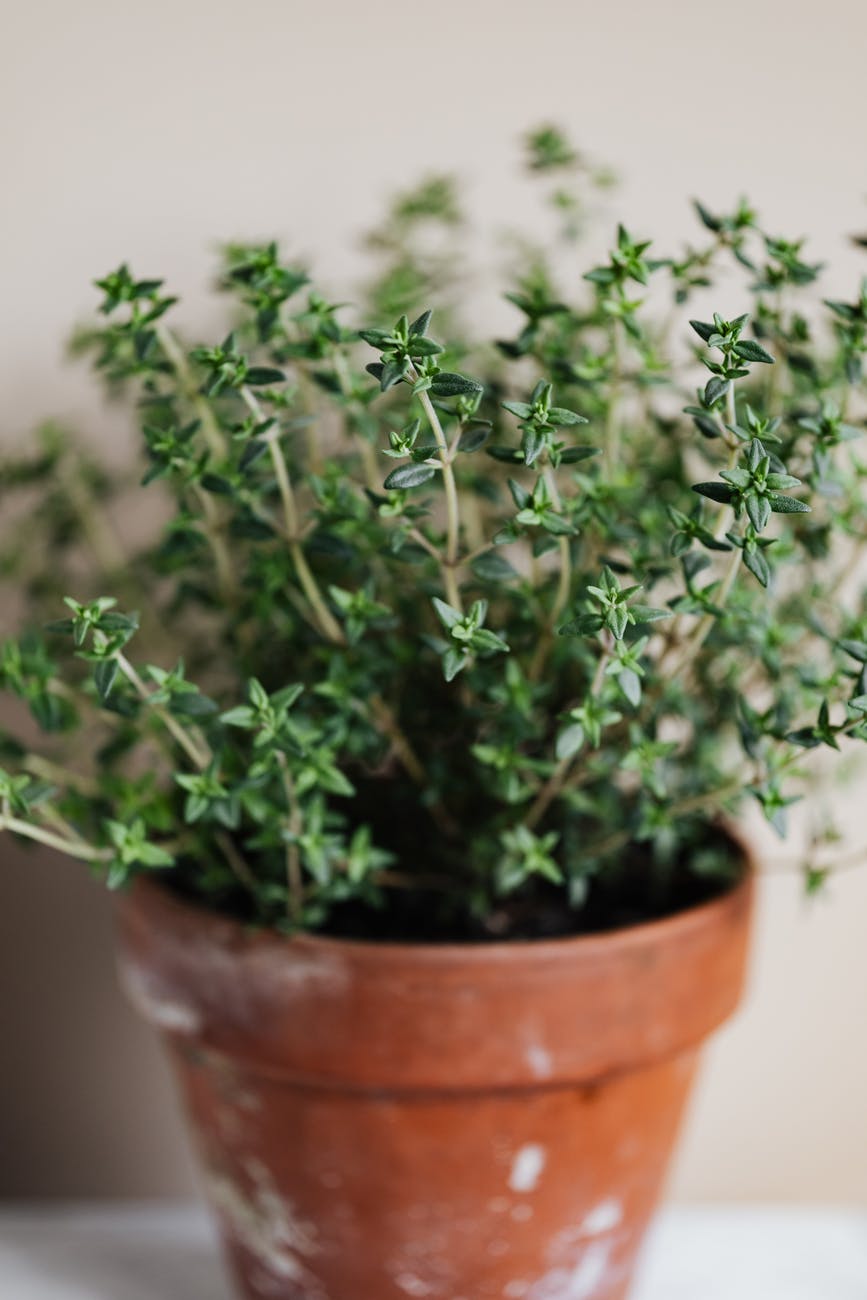
Thyme, or thymus vulgaris, is a common groundcover herb that is perfect for blanketing the container’s soil that the indoor rosemary is planted in. The herb offers blooms of pink, white, and purple during the warmer months, and its leaves can be used in the kitchen as a favored seasoning for salads, meats, and dressings.
Thyme grows best in a south-facing window that receives at least partial sunlight throughout the day. Watering is only needed when the soil dries out, as it does not grow well in standing water. Thyme is a fast grower, and as such, should be pruned regularly through its growing season for the best upkeep.
Marjoram

Marjoram, or Origanum majorana, is an easy to grow herb that is regularly used in the kitchen as a seasoning. Its strong fragrance also blends well with that of the rosemary, lending it a good choice as rosemary companion plants.
As a companion plant, it stimulates the growth of any surrounding plants. Marjoram blooms in the summer with clusters of small white flowers that make it visually appealing for an indoor container garden.
Marjoram is an excellent beginner plant, as once established, it requires little maintenance except for occasional watering. It grows best in full to partial sun and in any type of soil. In order to prevent any possible plant disease in marjoram, water the plant at its base and not over the leaves.
Outdoor Rosemary Companion Planting
While those focused on herbs to grow inside for companion planting, there are many plants that having rosemary growing next to it are beneficial. Having rosemary in vegetable gardens is great because it’s distinct scent repels insect pests from your garden.
Rosemary, and many other plants on this list will keep cabbage moths away, and possibly deter carrot flies.
Ready to grow some rosemary? It’s easy to take some rosemary cuttings and throw them on your food if you’ve got them growing near you! Many of the plants on this list have beautiful purple flowers, creating not only a beautiful scent in the garden, but also a sea of purple.
Pin It!
Want to keep these rosemary companion plant ideas for later? Save them to Pinterest!
